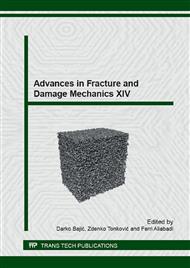p.1
p.5
p.9
p.13
p.17
p.21
p.25
p.29
Fracture Prediction for Ultralow Carbon Steel Sheet Subjected to Draw-Bending Using Forming Limit Stress Criterion
Abstract:
A fracture criterion for sheet metals subjected to draw-bending is investigated using the concept of forming limit stress criterion. The test material used is a 1.0-mm-thick ultralow carbon steel sheet. Draw-bending experiment of a wide specimen is performed for a die profile radius of 4mm. A specimen undergoes bending-unbending under tension when passing over the die profile radius. The drawing speed was set to 5mm/s. The magnitude of true stress when a specimen fractured has been precisely determined from the measured data of a drawing force and the cross sectional area of the draw-bent specimen after fracture. Moreover, multiaxial tube expansion tests of the test material are performed to measure the forming limit stress of the test material under plane strain tension. It is found that the is larger than by approximately 10 %. Therefore, it is concluded that the forming limit stress criterion is effective as a fracture criterion for a mild steel sheet subjected to draw-bending.
Info:
Periodical:
Pages:
1-4
Citation:
Online since:
September 2015
Price:
Сopyright:
© 2016 Trans Tech Publications Ltd. All Rights Reserved
Share:
Citation:


